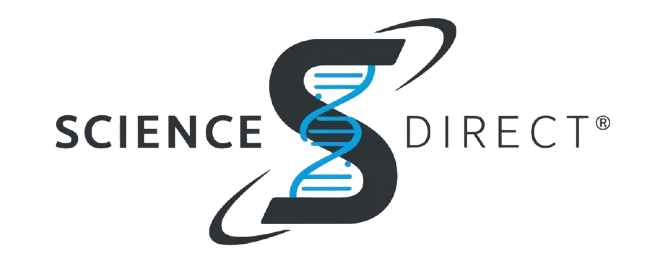Securing a faster path to CMMC level 2 compliance doesn’t have to mean cutting corners. It comes down to rethinking certain processes so every step is more direct, accountable, and documented the right way the first time. With the right adjustments, organizations can meet CMMC compliance requirements sooner and with fewer last-minute surprises before the c3pao arrives.
Narrowed Scope Definitions That Accelerate System Mapping
A clearly defined scope sets the tone for the entire CMMC level 2 compliance process. Narrowing the scope means limiting which systems and assets fall under the CMMC level 2 requirements, so teams can focus resources on what actually stores, processes, or transmits Controlled Unclassified Information (CUI). This cuts unnecessary mapping and eliminates distractions during early assessments. It also reduces the number of network segments, applications, and users that must meet the exact same compliance standard.
Once the narrowed scope is in place, system mapping becomes faster and cleaner. Teams can trace data flow with greater precision, building diagrams that match the real operational environment. This ensures the c3pao sees a defined, defensible boundary that reflects actual business operations. It also means less remediation work later, because fewer systems fall into the regulated environment without purpose.
Shared Responsibility Matrix Clearly Assigning Control Ownership
A shared responsibility matrix removes the confusion about who owns which CMMC compliance requirements. In environments where internal teams work alongside managed service providers, clear assignment of each control prevents overlap, missed tasks, and finger-pointing. The matrix lays out exactly who handles implementation, monitoring, documentation, and verification for each control under the CMMC level 2 requirements.
Having this matrix in place before an assessment also speeds up audit readiness. The c3pao can immediately identify the responsible party for every requirement, reducing time spent on clarification calls or chasing down evidence. This organization not only shortens the compliance timeline but also makes ongoing CMMC level 2 compliance far easier to maintain between assessments.
Gap Assessments Identifying NIST SP 800-171 Deficits Early
A thorough gap assessment compares current security practices against the NIST SP 800-171 controls that form the backbone of CMMC level 2 requirements. Identifying gaps early gives teams the breathing room to address deficiencies before they affect the formal audit. This phase should be done methodically, documenting not just missing controls but also partial implementations that need strengthening.
Early discovery of deficiencies means remediation can happen without rushing. It allows for proper testing, validation, and documentation of every fix, ensuring that when the c3pao reviews the evidence, there are no lingering compliance holes. This proactive approach removes the time pressure that often derails an otherwise smooth path to CMMC level 2 compliance.
Mock Audits to Preempt Formal Assessment Delays
Mock audits simulate the formal CMMC level 2 compliance assessment without the risk of failing in front of the c3pao. They are run either internally or by an experienced third party who can approach the environment with an auditor’s eye. These mock sessions help identify unclear documentation, missing artifacts, or inconsistent policy implementation.
By treating mock audits as real, organizations can correct both technical and procedural issues in advance. This prevents delays during the actual assessment, where any pause to gather missing evidence can extend the process. Mock audits build confidence across teams and streamline the interaction with the c3pao on assessment day.
Streamlined Documentation Workflows Reducing Revision Cycles
One of the most common slowdowns in achieving CMMC level 2 compliance is documentation that requires multiple rewrites. Streamlining documentation workflows means setting templates, approval processes, and storage standards before writing begins. This minimizes back-and-forth between compliance, technical, and leadership teams.
With clear workflows, every policy, procedure, and system description is built to satisfy CMMC compliance requirements the first time. Evidence packages can then be assembled without waiting on lengthy document edits. This approach saves significant time in the weeks leading up to the formal assessment and helps ensure the c3pao receives a polished, complete submission.
Continuous Monitoring Maintaining Compliance Between Audits
CMMC level 2 compliance is not a one-time achievement. Continuous monitoring keeps systems, policies, and controls aligned with requirements year-round. This involves regular security scans, log reviews, and control testing to catch issues before they become audit blockers. It also includes updating documentation and evidence repositories in real time rather than scrambling to prepare them before an audit.
By maintaining a constant state of readiness, organizations can move quickly when it’s time to schedule the assessment with the c3pao. This eliminates the typical ramp-up period and allows for faster re-certification or maintenance of compliance between audit cycles. Continuous monitoring turns compliance into an ongoing operational habit rather than a rushed project.
Incident Response Integration Ensuring Faster Audit Remediation
Integrating incident response procedures into the compliance framework allows for immediate action when something goes wrong. For CMMC level 2 requirements, this means documenting how security events are detected, reported, contained, and resolved—while preserving evidence. A well-rehearsed plan ensures that incidents are handled without jeopardizing compliance status.
When incident response is tied directly into compliance tracking, remediation steps are faster and more transparent for the c3pao. The auditor can see exactly how the organization met CMMC compliance requirements even under pressure. This preparedness shortens any delays in the audit timeline caused by unexpected events and reinforces trust in the organization’s ability to protect CUI.
